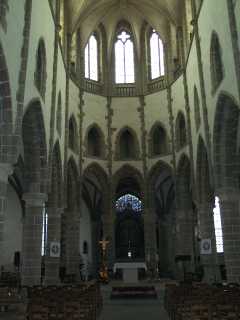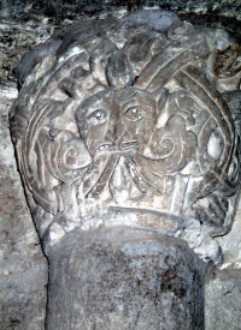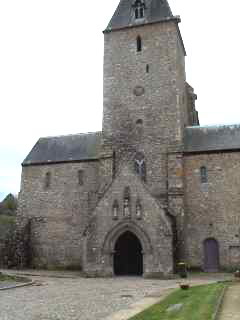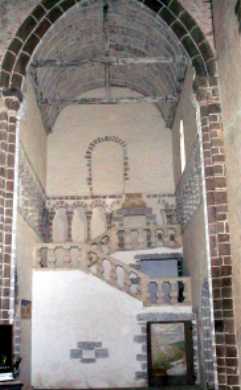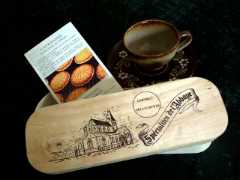The Abbey of Lonlay was
Founded by William de Belleme at the beginning of the eleventh
century. The Abbey Church was damaged during bombing in 1944
but many early architectural features can still be seen after
substantial restoration as a national monument.
It was a surprise to see
the Green Man carved on one of the capitals. This is sometimes
found in British churches and illustrates how the religious festivals
and beliefs of pre-Christian times were absorbed into the Christian
culture.
Lonlay Abbey is part of
a peaceful village community with a lovely riverside setting.
William de Braose I intended
to give the church of Briouze to Lonlay Abbey in about 1073 so
that its monks could establish a priory there. Had his plans
succeeded, much of his Norman estates and his increasing wealth
in England would have benefited Lonlay. The Abbot, however, refused
to comply with William de Braose's conditions that should the
priory prosper it would one day become an abbey. The Lonlay monks
who had already begun work at Briouze abandoned the church shortly
afterwards. The de Braoses gave their
patronage to the Abbey of Saint Florent in Saumur instead. In
1080 the Abbot of Lonlay challenged this in the court of William
the Conqueror, claiming that William de Braose had broken a solemn
oath to award his gifts to Lonlay. Lonlay lost the case, but
revived its claims in 1093. This time the Abbey appealed to Robert,
Duke of Normandy. During the hearing the Abbot of Lonlay, to
his dismay, realised that William de Braose already had the sympathy
of the Duke. The Abbot and his monks deserted the Duke's court,
much to the fury of the Duke Robert. See also Briouze.
Lonlay's Benedictine monks
were supported by other wealthy benefactors and the Abbey prospered
for many centuries, though not without difficulty. Only nine
kilometers from Domfront, it was often in the front line of hostilities
and abbeys were prone to pillage by passing armies. The monks,
reduced to only three, finally left Lonlay during the French
Revolution. Today Lonlay is famous
for its abbey biscuits - delicious!
|
© Lynda Denyer, Steyning,
2000 |

